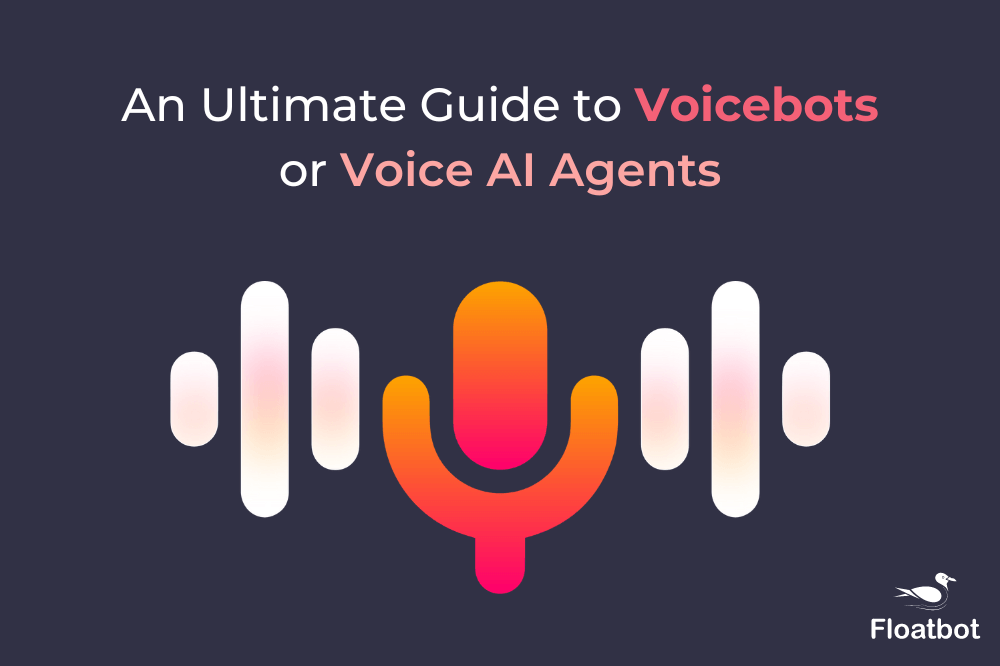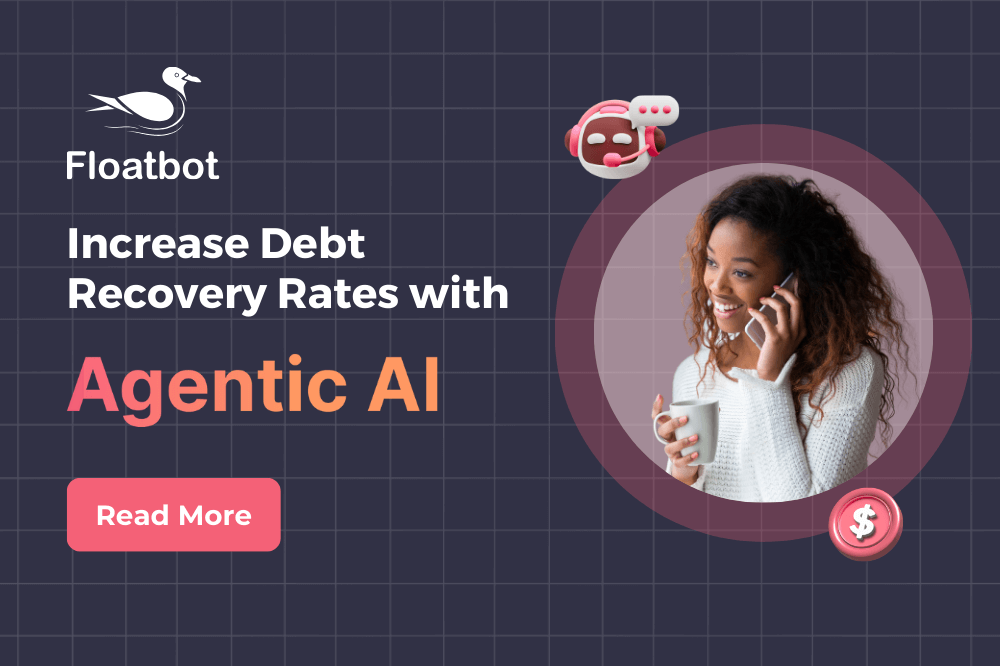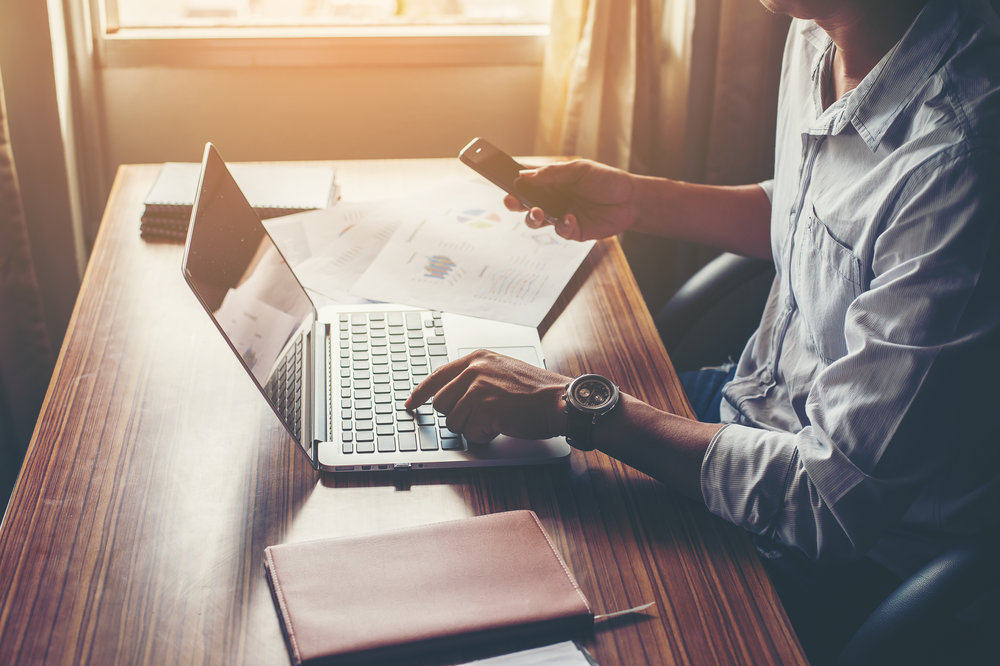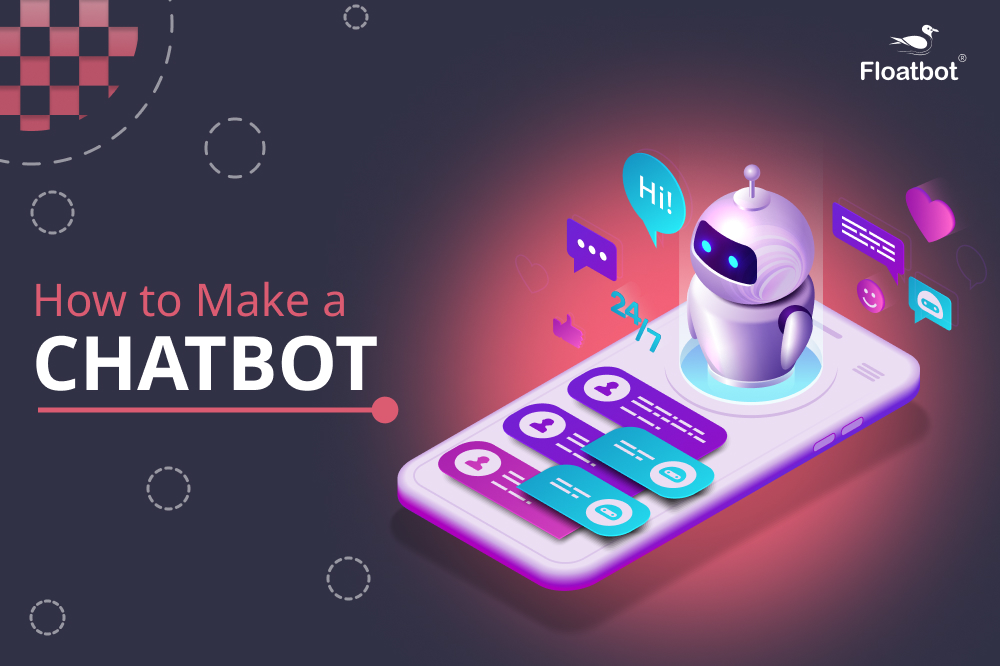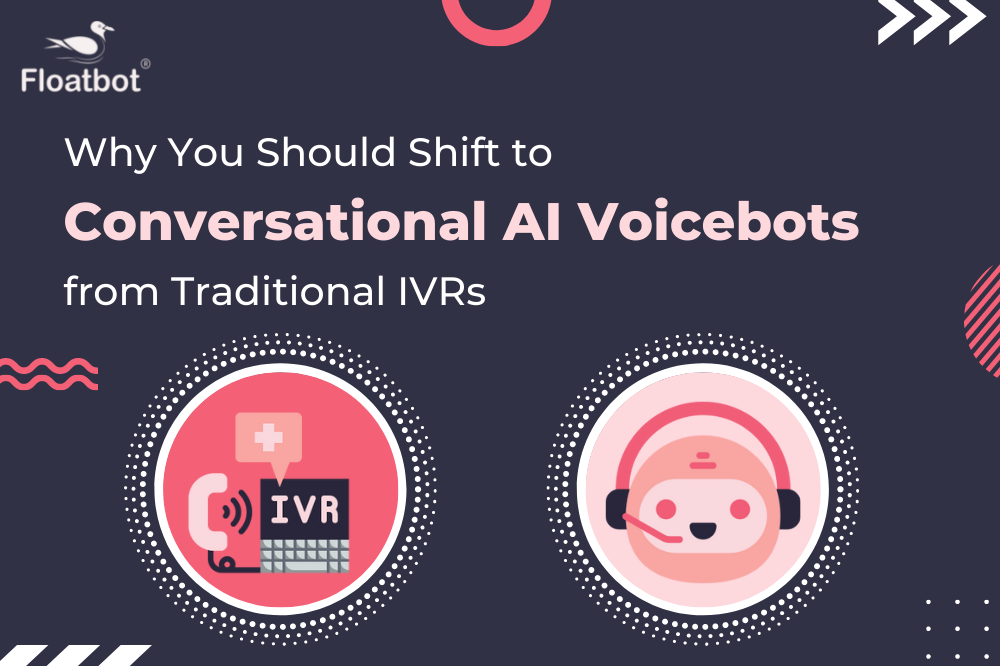What is LLM Agent? And how to build LLM Agents to improve CX
Get to know about LLM agents, what are LLM Agents, LLM prompts and how to build & implement LLM Agents with Floatbot.AI
- Jul 08 2023
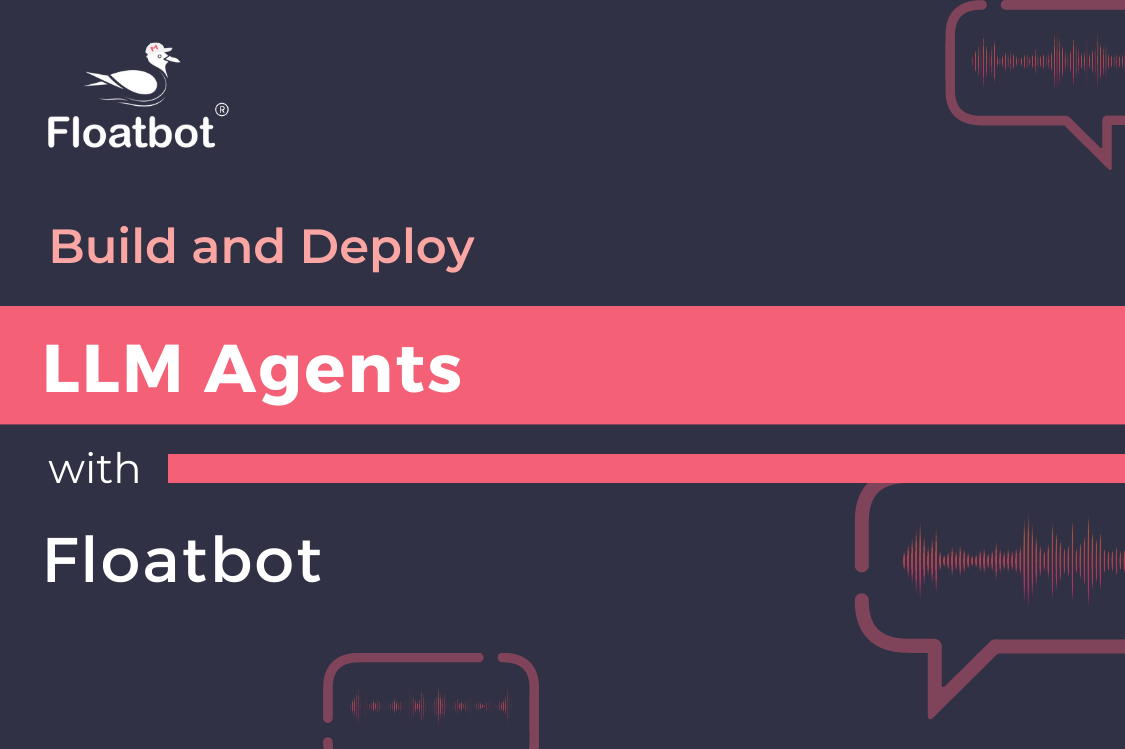
Customers demand seamless interactions, personalized services, and instant resolutions. Imagine having a virtual assistant so intuitive and empathetic that it reduces human intervention and work round the clock without breaks.
Meet LLM Agent – a revolutionary language model-driven AI that's transforming customer experiences. In this blog, discover how you can harness the power of these intelligent bots to take your CX strategy to unprecedented heights.
What is an LLM Agent?
Large language model, such as GPT-3 (Generative Pre-trained Transformer), is kind of Artificial Intelligence(AI) model designed to mimic human-like conversational behavior, providing intelligent and contextually relevant responses to a wide range of queries or prompts. They aim to facilitate seamless communication between humans and machines, offering personalized assistance and information based on user prompts.
LLM Prompts
LLM prompts are the inputs or queries provided by users to an LLM agent to generate responses. These prompts are crucial for the machine to understand and answer user queries accurately.
LLM agents can adapt to various industries, helping businesses achieve maximum potential in less time and reducing manual work. But, there are limitations to LLM. LangChain framework and Chain of Thought Prompting fill that essential gap.
Let’s understand what are they and how they impact the performance of LLM Agents.
What is Agentic AI
Agentic AI/Agentic LLM is a major step forward in artificial intelligence. So what is agentic llm and why does it matter? Unlike traditional AI, which follows set rules and responds to your commands, agentic AI can work on its own and pursue complex goals with little help from you.
What this means is it can actively explore options and make decision by itself. With this ability agentic AI can do more than just carry out tasks - it can also solve complicated problems and make smart choices.
Let us look at the applications of agentic LLM in businesses:
Insurance
In insurance, agentic AI automates the First Notice of Loss (FNOL) submissions, streamlining the claims process by reducing submission times and ensuring accurate data entry. Agentic ai provides 24/7 query resolutions, allowing for immediate responses to customer inquiries and improving overall customer satisfaction.
Additionally agentic LLM facilitates efficient underwriting by automating workflows and streamlining sales inquiries, which helps increase premium volumes. It also optimizes billing & policy processes by automating invoicing and payment reminders while ensuring compliance with regulatory requirement. Lastly agentic ai streamlines the workflows and tasks of adjusters, increasing their productivity.
Collections
Agentic AI automates collections and customer support across digital channels, including calls, texts, chat, and email, operating 24/7 in multiple languages. It efficiently manage right party contact (RPC), payment negotiations, and collections while ensuring compliance with regulations like Reg F, FDCPA, TCPA, and HIPAA. With agentic LLM, organizations can save on call costs and increase recovery rates, all while automating customer support.
Additionally, agentic AI enhances collectors' efficiency through real-time assistance, with features like conversational workflows, nudges, sentiment analysis and call summarization. It also maintains compliance through QA checks, reducing average handle time (AHT) and boosting collector effective index (CEI) and profit per account (PPA).
Lending
Agentic llm allow for end-to-end loan management (loan origination & servicing), 24/7 customer support and efficient document collection, which speeds up the approval process and helps recover dropped applications. Agentic ai creates self-service borrower portals, send automated payment reminders, and ensure compliance through real-time monitoring.
In loan collections, agentic llm track delinquent accounts, make communication easy and offer flexible payment arrangements, thus maintaining positive borrower relationships. By integrating agentic ai, lenders can manage high application volumes, enhance accuracy, scale operations.
Banking
Agentic AI helps streamline banking operations by quickly launching FAQ bots that learn from unstructured data, making it easy to enhance customer support. Digital onboarding becomes efficient with self-service options, live chat, and video calls, all optimized for web and mobile. Agentic llm also ensures compliance.
It allow for seamless integration with digital channels, serving customers across 15+ touchpoints, supporting numerous languages. They automate inbound and outbound calls too and enhance sales.
What is LangChain Agent?
While LLMs possess broad capabilities that enable them to handle numerous tasks, there are limitations when it comes to providing in-depth domain expertise. For instance, when you ask the LLM agent about a field like security or marketing it can answer your basic queries but fails to generate responses with deeper knowledge or expertise.
LangChain agent uses an approach where the corpus of text is preprocessed by cutting it down into small pieces or summaries, embedding them in a vector space, and searching for similar pieces when a query is posted. LangChain provides an abstraction that simplifies the process of composing these pieces and thus helps users like you and me in gaining deeper domain knowledge.
Chain of Thought Prompting
Large Language Models have a limitation in reasoning ability too, to overcome this limitation, a chain of thought, a series of intermediate natural language reasoning steps are to be included, in the few-shot prompting process.
"Chain-of-Thought Prompting Elicits Reasoning in Large Language Models" a research paper authored by Google Research, Brain Team introduces a new approach called chain-of-thought prompting, which improves the reasoning abilities of LLMs such as GPT-4. This approach adds intermediate natural language reasoning steps to few-shot prompts, enabling the model to break down complex tasks into smaller steps.
Chain of thought prompting is used in cases for arithmetic reasoning, common sense reasoning, and symbolic reasoning this in turn improves the interoperability and problem-solving capabilities of LLMs.
Now let’s get our hands dirty and practically understand how to implement LLM that elevates your customer experience.
Step-by-step process to implement LLM Agent
Data Collection:
Gather a large and diverse dataset of text that is relevant to the domain you want the LLM agent to specialize in. This dataset will be used to train the language model.
Preprocessing Data:
Clean and preprocess the collected text data by removing noise, formatting inconsistencies, and irrelevant information. Tokenize the text into smaller units to facilitate model training.
Training the Language Model:
Utilize ML techniques, particularly NLP approaches, to train the language model using the preprocessed dataset. Deep learning architectures like Transformer models have proven to be effective for training LLM agents. Training involves feeding the language model with sequences of text and optimizing its parameters to learn the statistical patterns and relationships within the data.
Fine-tuning:
Fine-tune the pre-trained language model on a more specific task or domain to enhance its performance and adapt it to your desired use case. This involves training the model on a task-specific dataset while keeping the pre-learned knowledge intact.
Evaluation and Iteration:
Evaluate the performance of the LLM agent using appropriate metrics, such as perplexity or accuracy, and refine the model as needed. Iterate through the training and fine-tuning process to continuously improve the agent's capabilities.
Deployment and Integration:
Once the LLM agent has reached satisfactory performance, deploy it in a production environment or integrate it into your desired application or platform. Provide the necessary APIs or interfaces for interaction with the agent.
Continuous Learning and Improvement:
Enable the LLM agent to learn and adapt to new data by periodically updating and retraining it with the latest information. This ensures that the agent stays up-to-date and maintains its relevancy over time.
Introduction to LLM Conversational Agents
An LLM-powered conversational agent is a chatbot that is powered by a large language model. These types of bots are programmed with Natural Language Processing (NLP), recognize keywords and phrases, understand sentiment from customer interactions and respond with appropriate information. LLM agents are trained on massive amounts of data that enable them to learn the patterns of human language and generate texts with a high level of accuracy and efficiency.
LLM conversational agents can be used in various industries and to automate services.
Automation using LLM Agents
AI-powered LLM conversational agents are now being used in multiple industries and companies are making the most of their services through automation.
Customer Service:
LLM agents can provide personalized experiences by analyzing customers’ past interactions and purchase preferences. LLM Agent uses this information to provide solutions and product recommendations. It can also be used to automate the generation of issue tickets and provide customer support in many ways.
This can free up human customer support agents to focus on more complex tasks, while also ensuring that customers receive accurate and timely support.
Sales and Marketing:
With LLM agents you can generate personalized sales and marketing materials, such as emails, landing pages, and social media posts. This can help businesses to reach a wider audience and improve their conversion rates faster.
Content Creation:
LLM-powered conversational agents generate text, such as emails, reports, or marketing materials. This generated content is tailored to specific audiences and purposes, ensuring that it is both informative and engaging.
Research:
Provide answers to users with accurate and up-to-date information.
Analyzing and Reporting:
AI Agents can analyze data, and identify patterns and trends that would be difficult or time-consuming for humans to find; with this automated service, businesses can make better decisions.
Translate languages:
Translate in multiple other languages, allowing businesses to reach a wider audience and save costs involved in translation.
Generating code:
Generate code to automate tasks or create new applications.
As LLM agents become more powerful and accessible to small and big enterprises, we can see more use cases in the future.
Benefits of LLM Automation
- Better customer service
- Improved CX
- Improved Agent Experience
- Agents can focus on challenging tasks
- Improved operational efficiency
- Reduced operational costs
- Improved decision-making
- Predictive analytics
- Boost the productivity of the Marketing and Sales team
Agent M
Floatbot’s Agent M is the AI Agent Framework that allows you to create multiple LLM agents and orchestrate between one agent and the other. These agents can be used for various purposes by training them in specific skills like customer service, sales, help desk, customer success, and so on.
- These LLM agents are capable of making natural language-based API calls to push or pull data or search through an unstructured knowledge base or navigate the process to provide a very contextual answer.
- You can build voicebot, and chatbot with no code; enabling multi-lingual capabilities.
- You can integrate Agent M with CPaas, and CCaas solutions for calling and text-based interactions.
Consider, yoif u’re building a messaging app you can train one LLM agent with customer service skills on the specific conversational processes of your enterprise, and Application APIs to push/pull data with Large Language Model or ChatGPT.
Agent M is not another ChatGPT, it’s superior to ChatGPT and is trained to understand a series of complex queries from users with powerful features like:-
- User Session Management
- Memory module for complex contextual conversation
- Access Management
- Orchestration Engine
Floatbot is the easiest and fastest way to get started with customer support automation. Your AI Agent is entirely built on your existing help center, so using the power of LLMs, it can instantly and accurately respond to your customers.
The best part?
No training or maintenance is required. It acts upon customer support tasks, streamlining your processes, and reducing waiting times.
Conclusion:
There you have it!
Everything about LLM and how can your business leverage LLM agents in boosting services, and operations. And by providing an exceptional customer experience that delights them and makes them come back for more, resulting in loyal customers.
Floatbot provides you a platform to build custom LLM agents along with Agent M, the master generative AI agent, and many more tools like voicebot, and chatbot.
Contact Us to know more or Get Started FREE to improve customer experience with the power of Generative AI.

